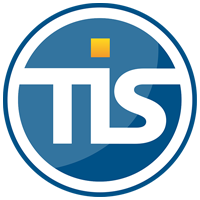The impact of PSD2 on payment transactions
| 07-10-2019 | TIS |
This September the new EU directive PSD2 (Payment Services Directive 2) came into force. It is an extension of the Payment Services Directive, which was intended to harmonize the rules for payment products and services. Although this amendment affects every consumer who uses online payment services, and although sufficient notice has been given in advance of the amendment, few people know what the new EU Directive is all about. For this reason, it is not uncommon for bank customers to be confronted with an account blockage after the changeover, when logging into their online bank account, which causes a lot of confusion between banks and customers. As a result, several questions arise:
- What has changed for the customer as a result of the changeover?
- Can the new regulation keep the promised security standards?
- To what extent are companies – especially Treasury- affected?
What is PSD2?
PSD2 is intended to regulate payment services and payment service providers in the European Economic Area (EEA) and throughout the European Union (EU). It aims to make cashless payments more secure, customer data better protected and data transmission over the Internet more reliable. In addition to the changes for customers, who are to experience more security through increased authentication, there are also significant changes for banks. From now on, banks will be obliged to provide third party service providers with access to customers’ account information via a standardised interface (PSD2 API) if the customer gives the consent. For banks, this means that they must surrender a large part of their power of disposal. For customers, this means that they can now make all their payment transactions without having to log into their online bank account. This is convincing for the customers, because specialised fintechs are ahead of banks and offer solutions that allow all your financial transactions – even within different bank accounts – to be carried out with only one application. This is nothing new in the world of B2B, where corporates use payment solutions with the exact same purpose for years now.
Is PSD2 safe?
A change in the conditions of payment transactions often raises the question of whether it can actually meet the promised security standards. Especially in this case, where customer information is passed on to a third-party service provider. If lacks in security arise, there is a higher risk to become a target for cybercrime, which automatically puts bank customers’ confidential account information at risk. The European Banking Supervision and BaFin are taking it very seriously. In order to make the customers’ choice for the right third-party service provider easier, they provide a directory of reliable, registered and licensed third-party service providers.
PSD2 for Treasury?
Consumers demand real-time, round-the-clock payment services and this demand is growing. This brings changes in payment transactions that have an impact on the businesses, especially on corporate treasury which looks after cashflow. Most up-to-date account information becomes more crucial for a treasurer. The new PSD2 API interfaces could help, since it enables more direct communication with the bank and access to real-time account information.
About TIS
TIS (Treasury Intelligence Solutions GmbH) is the leading cloud platform for managing corporate payments, liquidity and bank relationships worldwide. The company delivers SMART PAYMENTS to help customers make BETTER DECISIONS.
TIS enables companies to make more efficient, more secure and more cost-effective payment transactions. In addition, TIS enables customers to make better decisions when analysing financial and operational performance based on real-time payment flows. All mission-critical processes related to payment transactions are integrated into a multibank-capable, audit-proof cloud platform. This is a single point of contact for enterprise customers when managing and analysing their payment flows across the organisation. TIS take care of managing various payment formats, communication channels with banks, and ERP-agnostic integration. Offered as Software as a Service (SaaS), the ISO certified TIS solutions are quickly up and running without the complexity and cost of a long IT project.










